Navigating the intriguing world of snakes can often leave us puzzled, especially when it comes to the Corn Snake and Milk Snake—two slithery beings with striking resemblances.
In this exploration, we’ll dive deep into understanding the nuances that set them apart, from physical attributes to behavior, habitats, and even some age-old myths.
By the end, you’ll be equipped with the keen eye of a herpetologist, discerning between these two with ease. Let’s embark on this serpentine journey!

Table of Contents
Overview of Corn Snakes
Ah, the majestic Corn Snake! Known to many but understood by a few. Let’s embark on a journey to uncover the secrets of this fascinating reptile.
Natural Habitat and Origin
Originally from the southeastern regions of the United States, corn snakes thrive in a variety of environments, from forested areas to overgrown fields. So why the name “Corn Snake“? No, they don’t have an obsession with corn.
It’s believed the name comes from their regular presence in cornfields or perhaps from the maize-like pattern on their belly. Either way, it’s a bit of a misnomer.
And speaking of habitats, don’t be surprised if you find one in a barn or other rural structure; they’re quite the explorers!
General Appearance: Colors, Patterns, and Size
Now, onto the dazzling spectacle of their appearance! Corn snakes boast a variety of colors and patterns. Their base color ranges from a rich reddish-brown to orange, decorated with large, black-edged red blotches.
It’s like Mother Nature had her paintbrush out and decided to create a masterpiece! The underbelly?
That’s where the “corn” part really shines, with its checkered black and white pattern resembling, well, corn kernels!
Size-wise, they’re pretty moderate for a snake. A typical adult corn snake will stretch out to about 3.5 to 5 feet. Though not the largest snake you’ll find, they certainly make up for it with their captivating appearance and demeanor.
Behavior and Temperament
Ever met a polite snake? If not, meet the Corn Snake. Known for their docile nature, they’re a favorite among reptile enthusiasts, especially beginners. Rarely aggressive, they’re more curious and gentle creatures, eager to explore their surroundings but not to cause any ruckus.
While in the wild, they have this uncanny ability to mimic the venomous copperhead in behavior, a fantastic trick to deter potential threats. It’s all an act, of course! But let’s keep that between us. It’s their little party trick, after all.
And there you have it: a brief yet engaging glimpse into the world of corn snakes. But, remember, this is just half the story. The tale of the milk snake awaits! But that, my friend, is a tale for another time.
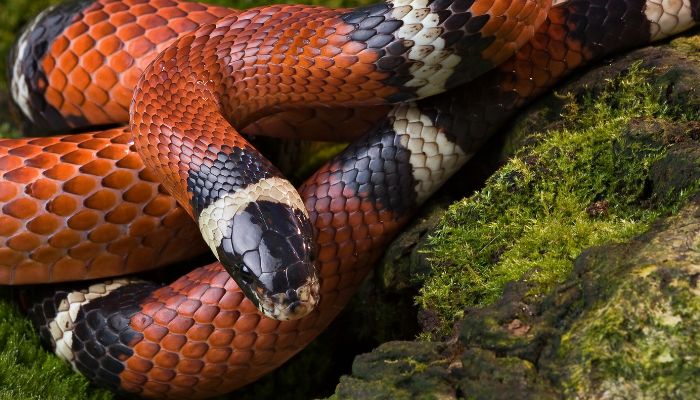
Overview of Milk Snakes
Alright, curious soul! Let’s switch gears and delve into the mesmerizing world of the Milk Snake. Just a heads up: they aren’t dairy enthusiasts, despite what their name might suggest!
Their Intriguing Name Origin
The tale of the milk snake’s name is shrouded in myth and folklore. The most popular story? It was once believed that these snakes would sneak into barns and drink milk straight from cows’ udders.
Quite an image, isn’t it?
However, let’s bust that myth right here: snakes can’t drink milk! The name stuck, but in reality, it’s a tall tale from the past.
General Appearance: Distinct Patterns, Colors, and Size Variations
Milk snakes truly are a spectacle for the eyes! Their vibrant colors and patterns make them one of the most recognizable snakes out there. Flaunting alternating bands of red-black-yellow or white, they could easily pass as living jewelry.
It’s nature’s way of saying, “Look, but don’t touch!”
Although these patterns can sometimes be similar to the venomous coral snake, remember the old rhyme: “Red on yellow, kill a fellow; red on black, friend of Jack.” And guess what? Milk snakes fall into the “friend of Jack” category!
In terms of size, they’re quite versatile, ranging anywhere from 14 inches as tiny hatchlings to a sprawling 5 feet as mature adults. Their size variation truly speaks to their adaptability in different environments.
Behavior: Are They as Milky as They Sound?
Well, not exactly. While they aren’t sipping on dairy, milk snakes have a set of behaviors that are equally intriguing. Generally secretive, they prefer staying undercover during daylight hours, making rare appearances when the mood strikes.
They’re non-venomous and often mimic more dangerous snakes to keep potential threats at bay. Smart, right? When faced with danger, instead of confrontation, they’d rather play dead or release a foul-smelling musk. Anything to avoid a tussle!
In essence, milk snakes are calm, calculated, and, dare we say, a tad dramatic! And while they won’t be accompanying you for a glass of milk anytime soon, they’re fascinating creatures worthy of admiration.
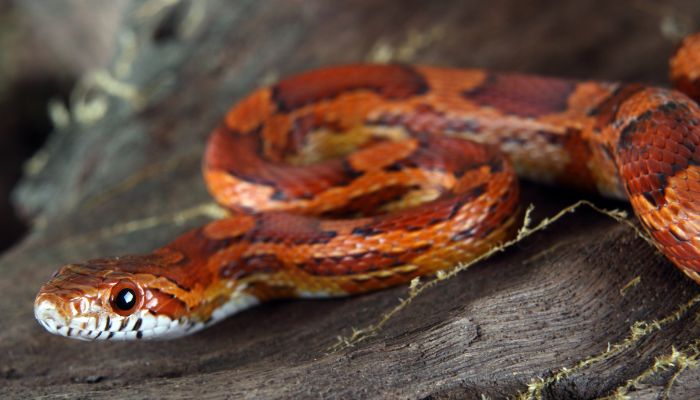
Historical Confusion Between the Two
The saga of the Corn Snake and the Milk Snake is one filled with mix-ups and mistaken identities. These two, with their dazzling patterns and striking appearances, have been the stars of many a snake misidentification drama.
Why People Often Mix Them Up
At a glance, both these snakes flaunt vibrant bands and blotches, making it a tad challenging for the untrained eye to tell them apart. Their habitats often overlap, especially in areas of the southeastern United States.
So, if you’ve found a colorful, banded snake in your backyard, the game of “Is it a Corn or a Milk snake?” begins!
Historical Anecdotes or Stories of Misidentification
There’s a historical whisper of farmers who believed milk snakes were responsible for low milk yields, confusing them with the harmless corn snakes seen around their barns. Both were wrongly accused of sipping milk in the dead of night!
Another story goes that early settlers, noticing the resemblance of corn snakes to the more dangerous copperhead, often killed them on sight, misjudging the harmless critter for its venomous doppelganger.
Such tales of misidentification, fueled by folklore and genuine confusion, showcase the intertwined histories of these two beautiful species. But with education and awareness, we’re slowly unraveling the mysteries behind each slither and pattern.
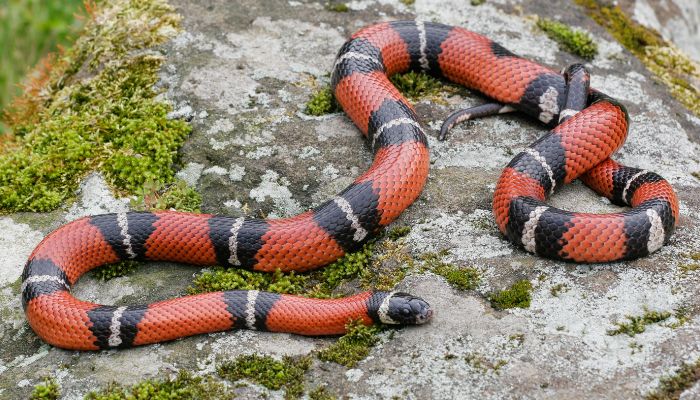
Physical Differences
Distinguishing between the Corn Snake and the Milk Snake can feel like solving a riveting mystery. With their overlapping territories and somewhat similar appearances, the challenge is real. But fret not!
Let’s dissect the physical traits that set these serpents apart.
Scale Details, Colors, and Patterns
Both these snakes have keeled scales, meaning each scale has a ridge down its center, giving them a slightly rough texture. However, the devil is in the details!
Corn Snake: Picture a canvas painted with a base of reddish-orange to brown. Then, envision large red or brown blotches bordered in black, running down the back. Now, flip this canvas over and what do you see?
A white or yellow belly with a black checkerboard pattern, reminiscent of, well, corn.
Milk Snake: These guys are a bit more flamboyant. They wear alternating bands of red, black, and yellow or white. It’s almost like they’re wearing nature’s most vibrant bracelets!
Head Shape, Size, and Other Physical Traits
The Corn Snake and Milk Snake have different tales to tell when it comes to their head and size.
Corn Snake: Their head is slightly distinct from their neck, giving them a gentle, tapered look. As adults, they can range from 3.5 to 5 feet. They possess a slender body, giving them a graceful appearance.
Milk Snake: These beauties have a head that’s more or less the same width as their neck, almost creating a uniform appearance. They vary more in size, with adults ranging from 2 to 5 feet, depending on the specific subspecies.
Eyes: Let’s Look into the Window of Their Souls!
Ah, the eyes! They say eyes are the windows to the soul, and in the case of our scaly friends, they can also be the window to their identities.
Corn Snake: Their eyes have a touch of mystique, featuring round pupils set against a backdrop of an orange or gold hue.
Milk Snake: The pupils? Still round. But the backdrop is a bit darker, leaning towards a brown or gray shade.
In the end, while both these snakes might share the same stages and often, the same audience (that’s us!), their physical nuances sing different songs. The key is to listen (or in this case, observe) closely!
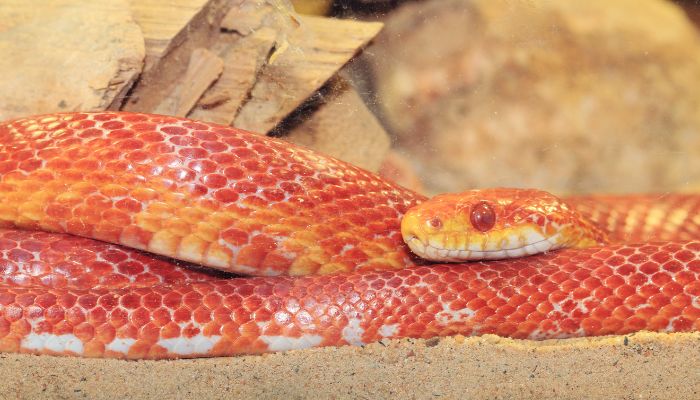
Behavior Differences
Ah, behavior! Just as we have our unique quirks, so do our slithery counterparts. Let’s delve into what makes each of these serpents tick.
Active Hours: Nocturnal or Diurnal?
Corn Snake: These guys prefer the warmth of the day. Being diurnal creatures, they are most active during daylight, basking in the sun, and hunting for meals.
Milk Snake: A bit more secretive, milk snakes lean towards being nocturnal. The cover of night is their chosen time to hunt and roam about.
Reaction to Humans: Friendly, Shy, or Feisty?
Corn Snake: Generally pretty chill. They’re renowned for their docile nature, especially when accustomed to human interaction. They’re curious but not confrontational.
Milk Snake: They tend to be a bit shyer and might even play dead if they feel threatened. But with regular handling, they too can become used to human presence.
Any Quirks Specific to Each Species
Corn Snake: Known to be great escape artists! If you’ve got one as a pet, ensure their enclosure is secure.
Milk Snake: These little drama kings and queens might occasionally release a foul-smelling musk if they feel threatened. It’s their version of saying, “Back off!”

Habitats and Natural Environments
Now, let’s embark on a global tour to discover where these snakes call home.
Where in the World Can You Find Them?
Corn Snake: Primarily, the southeastern United States. Think Florida, New Jersey, and even as far west as Kentucky.
Milk Snake: Their domain stretches wider, from southeastern Canada through the U.S. and as far south as Central America.
Preferred Climates and Terrains
Corn Snake: They love forested areas, overgrown fields, and even sometimes urban regions. It’s not rare to find them basking on a warm rock or slithering through tall grass.
Milk Snake: Being quite versatile, they thrive in woodlands, grasslands, and mountainous regions. They’re even known to inhabit rocky outcrops or deserted buildings.
Domestication and Adaptability
Corn Snake: They’ve earned their badge as one of the most popular pet snakes due to their adaptability and docile nature. With proper care, they can thrive in captivity.
Milk Snake: Also quite adaptable to captivity, but they may require a bit more patience initially, especially if they’re wild-caught. Over time, with consistent handling and care, they become accustomed to domestic life.
In essence, while both snakes have their unique preferences, both also exhibit a marvelous adaptability, whether in the wild or in the comfort of a terrarium.

Importance of Correct Identification
Distinguishing between a Corn Snake and a Milk Snake isn’t just for the sake of trivia. It’s pivotal!
Why Getting it Right Matters
Correct identification aids in understanding the snake’s natural behavior, habitat, and dietary needs, especially if they’re being kept as pets.
Consequences of Mistaking One for the Other
Mistaking these snakes can lead to improper care in captivity. Plus, in areas where both reside, confusing them with other, possibly venomous snakes, can cause unnecessary panic or harm to these harmless reptiles.
Summary
You’ve journeyed through the fascinating realms of Corn and Milk Snakes, unveiling their differences, behaviors, and habitats. Recognizing these details can empower you in various scenarios, from nature outings to considering a reptile pet.
Remember, understanding our environment and its inhabitants allows for greater appreciation and care. Now equipped with this newfound knowledge, you’re not just a passive observer but an informed enthusiast.
Continue your quest for knowledge and let every discovery, like this one, fuel your passion and respect for the natural world. Keep exploring and learning!
FAQ
How do you tell if a snake is a corn snake?
Look for the reddish-orange base color with large red or brown blotches bordered in black. Their bellies often resemble a checkerboard.
How do you identify a milk snake?
Spot alternating bands of red, black, and yellow or white. Their uniform head and neck width can also be a giveaway.
What looks similar to a milk snake?
The venomous coral snake looks eerily similar but remember: “Red on yellow, kill a fellow; red on black, friend of Jack.” The Milk Snake is definitely our friend, Jack!

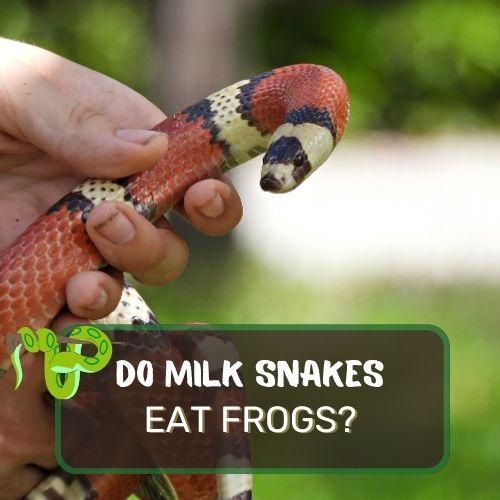
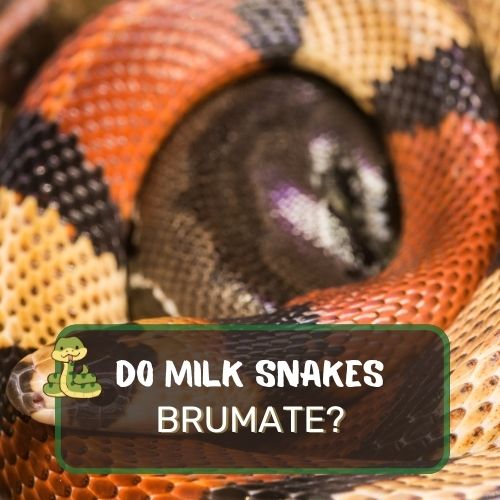
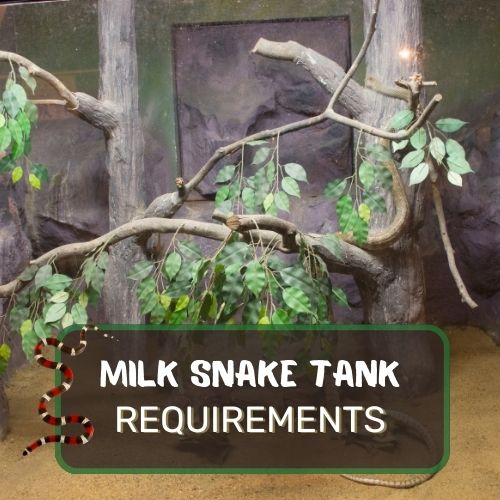
0 Comments